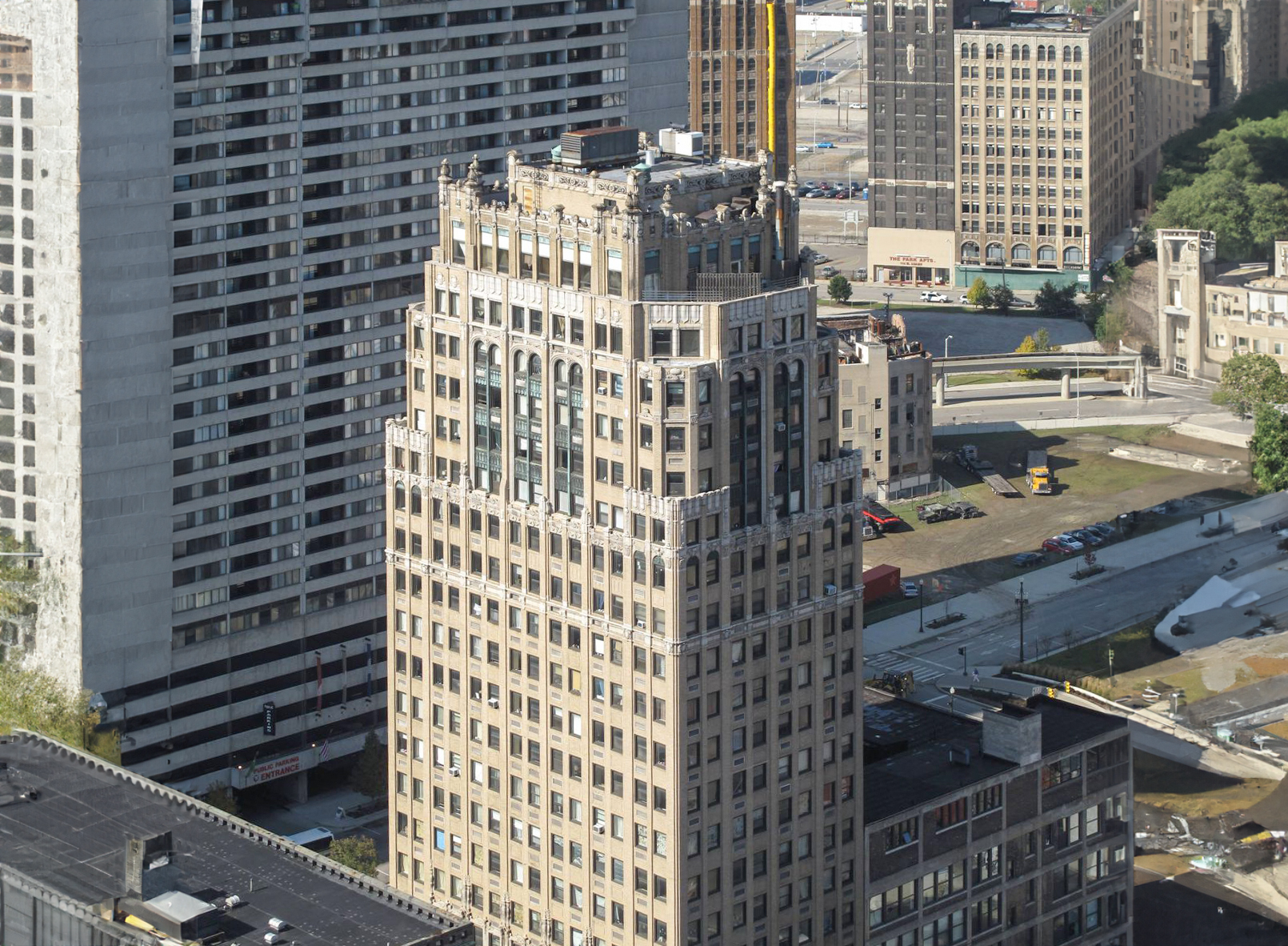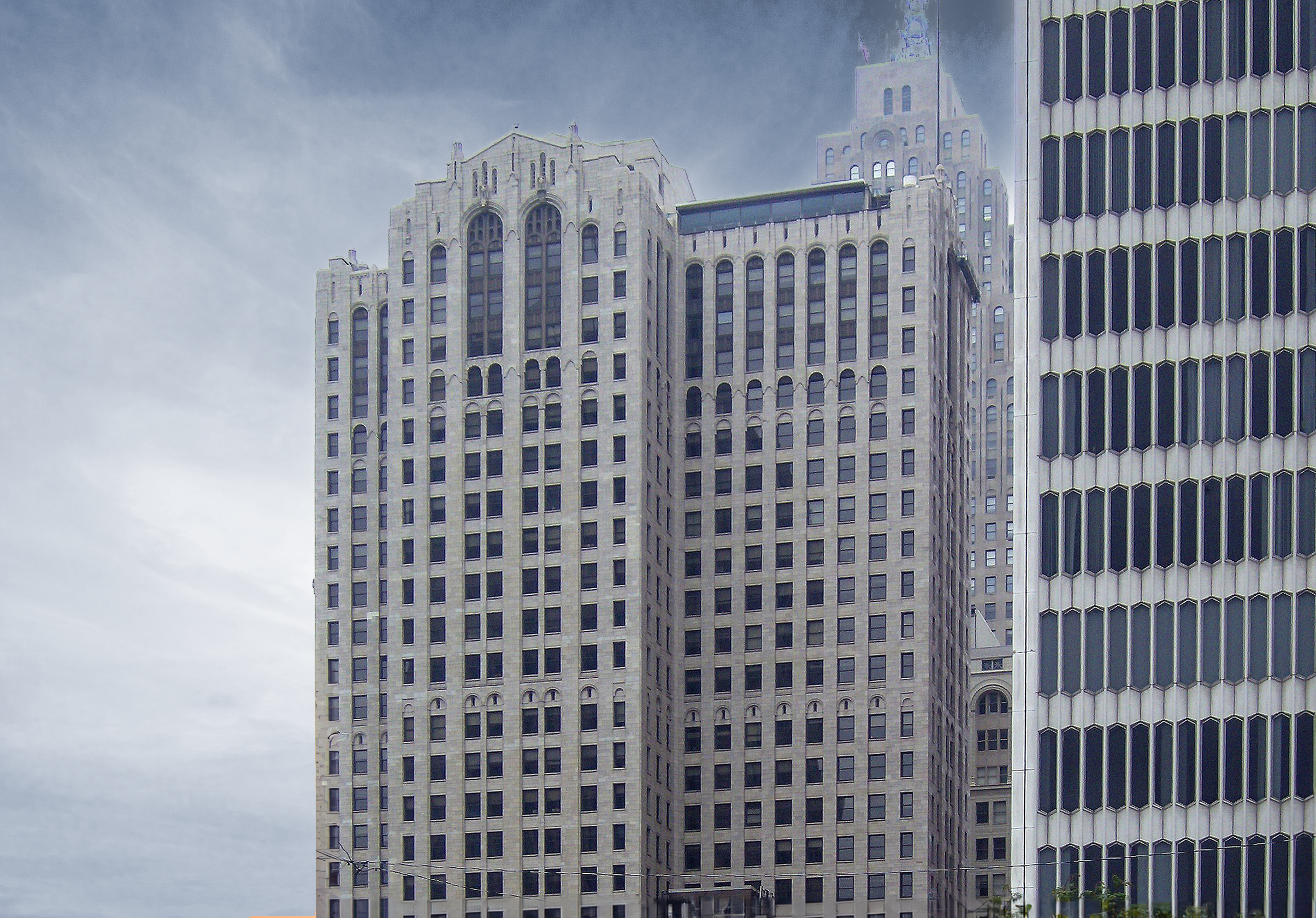The Industrial Building is a Neogothic skyscraper designed by Louis Kamper, and built between 1926 and 1928, for a reported $2.00 million dollars, in Detroit, MI.
Industrial Building is not the only name you might know this building by though. It is common for companies to want to attach their names to iconic buildings when they move in, or for the general public to come up with nicknames, and this one is no exception. The Industrial Building is also known, or has been known as, Industrial Apartments, Industrial Bank Building, Louis Kamper Building, or Park Palace Apartments.
Its precise street address is 1410 Washington Boulevard, Detroit, MI. You can also find it on the map here.
The building has been restored 2 times over the years to ensure its conservation and adaptation to the pass of time. The main restoration works happened in 1981 and 2019.


